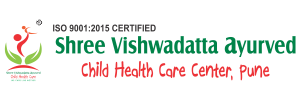Epilepsy / seizures / fit
Epilepsy is a neurological condition affecting the brain and nervous system. It is one of the most common disorder of the nervous system, where a children has a tendency to have seizures that start in the brain.
The brain consists of millions of Nerve cells that use electrical signals to control the body’s functioning, the senses and thoughts. The brain consists of Nerve cells that communicate with each other through electrical activity seizures occurs when one or more part of the brain has a burst of abnormal electrical signals that interrupt normal brain signals. Anything that interrupts(disrupted) the normal connections between nerves in the brain can cause seizurs. If the signals are disrupted the person may have an epileptic seizures. Sometimes called a fit or attack.
Not all seizures are epileptic other condition that can look like epilepsy include fainting due to drop in blood pressure, febrile convulsions due to high fever, hight or low blood sugar, alcohol or drug withdrawal or a brain concussion. But when child two or more seizures with no known cause that is diagnosed as epilepsy.
There are many different types of seizures. Some are very short lasting only few seconds while other can last a few minutes. The type of seizure a person has depends on where the brain is involved or how much the brain is affected and what happened during the seizures. Physician will typically diagnose a child with epilepsy also called a seizures disorder.

The main categories of epileptic seizures are-
1. Focal (partial) seizures
2. Generalized seizure
3. A pelrril seizure
4. Neonatal seizure
- Focal (partial) seizure-
Focal seizures take place when abnormal electrical brain function occur in one or more areas of one side of the brain. Before a focal seizure , child may have an aura or signs that a seizure is about to occur. This is more common with a complex focal seizure. The most common aura involves feeling impending doom, fear or child may have visual changes, hearing abnormalities for changes in sense of smell.
The two types of focal seizures
– simple focal seizure
– complex focal seizure
- Generalized seizure:-
A generalized seizure occurs in both sides of the brain. Child loose consciousness and be tired after the seizure.
Types of generalized seizure are
– absence seizure/ petilmas seizures
– atomic seizure
– generalized tonic clonic seizure
– mayoclonic seizure
– statas epilepticus
Causes of epilepsy or seizure-
– disorders of nervous system
– brain tumor
– strokes
– brain damage from illness or injury
– genetics
Symptoms of epilepsy or seizure
– staring
– jerking movements of the arms and legs
– stiffening of the body
– loss of consciousness
– breathing problems
– loss of bowels
– loss of bladder control
– not responding to noise
– appearing confused
– nodding head rhythmically
– periods of rapid eye blinking
3. A febrile seizure:-
A febrile seizures occurs when a child contracts an illness such as an ear infection, cold accompanied by fever. febrile seizures are most common types of seizure seen in children. 2- 5 % of children have a febrile seizure at some point during their childhood.
4. Neonatal seizures: –
Neonatal seizure occur within 28 day of birth. Most occur soon after the child is born. They may be due to a large variety of condition. It may be difficult to determine if a newborn is actually seizuring, because they often do not have convalsion. Instead, their eyes appears to be looking in different direction. They may have lip smacking or periods of no breathing.
As per Ayurveda
I Ayurved Acharya charka in charak Samhita epilepsy mentioned as Apasmara disease. And epileptic attacks or seizures are known as Akashpaka. In Ayurveda the similar presentation has been explained with its aetiology, symptoms, diagnosis and Management.
Apasmara defined by charaka as Apagama of smriti associated with Bibhatsa chesta due to derangement of Dhi and Sativa. Apasmara has described by acharya Dalhana as the disease during the attack of which smriti is lost. The features, Tamah pravesa is equivalent to Jnana Abhava i.e. Absence of consciousness, Bibhitsa chest include all loath some expression and samplava indicates vibhrama or perversion.
In Ayurveda, the convulsions are caused due to imbalance of the vata dosha. The loss of consciousness in terms of doshic influence can be attributed pitta dosha. When one loses consciousness soon after seeing the colours red blue and black and also recovers quickly, this is considered as sign of vata disturbance. Similarly, pitta disturbances happen due to seeing the colours light or dark red or yellow and recovering with heavy sweating. Convulsions in Apasmara are followed by losing consciousness and prothing at the mouth. Due to its cardinal sign of loss of consciousness or memory, epilepsy or elepticic attacks or seizures are commonly known as the falling disease or fits. It is serious disorder of the central nervous system that affects both children and adults alikes.
According to Ayurved, epileptic seizures are categorised into four types Vataj, Pittaj, Kaphaj and Sannipataj.
Treatment for epilepsy in Ayurveda-
Our Ayurvedic medicine target the root cause of epilepsy which is the imbalanced Doshas. It supports the desired coordination of various parts of the brain with the help of herbs. We focus on balancing the doshas with are the root cause of epilepsy. Our Ayurvedic line of treatment significantly reduces the the severity and frequency of the seizures. Further our Ayurvedic Akshepashaman medications act similar to the modern anticonvulsants however, without any side effects. Ayurvedic medicine are helpful in improving the coordination of right versus left brain. And also balancing of Dhi, Dhriti and Smriti. Our self formulation act the level of the Nervous System and facilitate proper conduction of signal impulses from the nervous to the muscles. Our herbs improve the state of epilepsy, blood circulation and overall health of patient. Right from the usage of our medicine and Panchakarma therapies both the frequency and severity of seizures reduces and in case of occasional seizures, the patient may not have a seizure attacks.
Ayurvedic treatment for epilepsy
Internal medicine
– medhya rasayna
– sangyasthapan chikitsa
– manas chikitsa
– Akshepshaman chikitsa
– Satvavajay chikitsa
Panchakarma
– basti
– vamana
– virechana
– shirodhara
– shirupichu
– Abhyagam
– lepan
Yoga and Pranayama
Meditation
Ahar (diet) – ( Pathya – Apathya )

